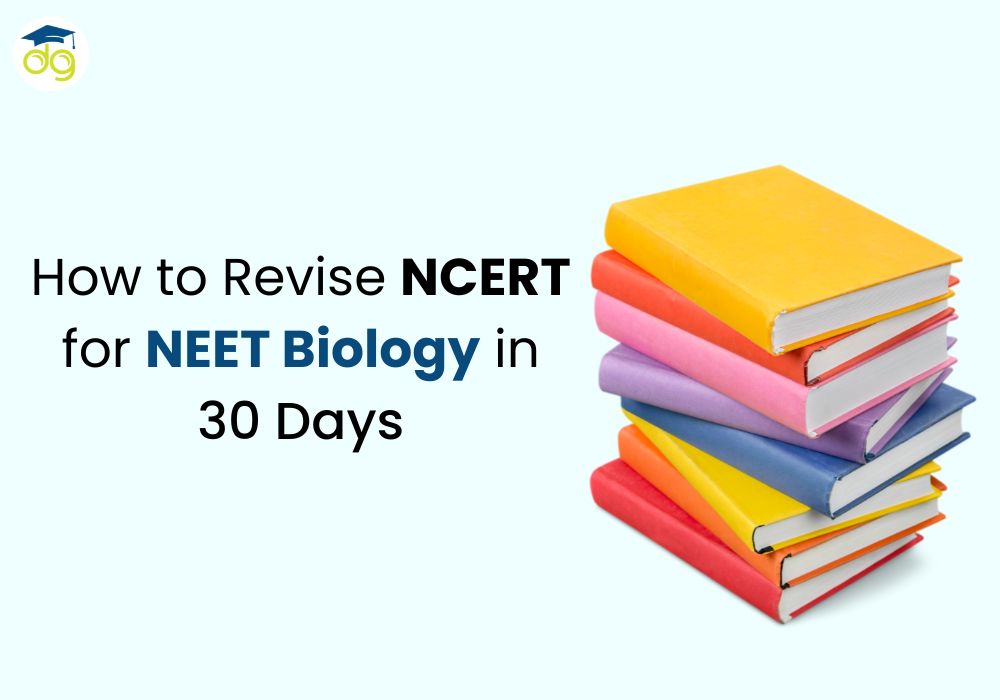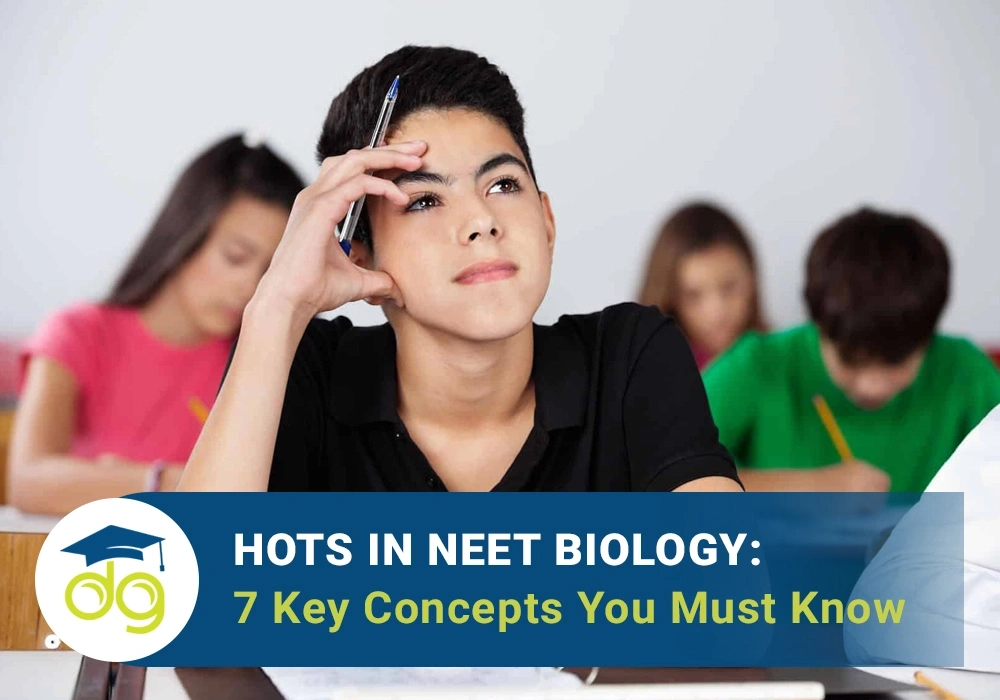HOTS in NEET Biology: 7 Key Concepts You Must Know
Master NEET Biology: 7 key concepts for higher-order thinking skills
As the NEET exam becomes increasingly competitive, the focus has shifted towards testing students' higher-order thinking skills (HOTS) in the Biology section. HOTS questions require students to go beyond mere memorization and apply their conceptual understanding to analyze, evaluate, and solve complex problems.
In this blog, we will explore 7 key concepts that are crucial for mastering HOTS in NEET Biology:
1. Understanding Biological Processes
Most of the HOTS questions in NEET Biology are framed in relation to different concepts like photosynthesis, respiration, divisions of cells, and hormonal changes- to name a few. Students should be aware of how such mechanisms work, what factors have an impact on these processes, and how these processes are coordinated.
For instance, in the process of writing HOTS questions, for a topic such as photosynthesis, students are required to consider factors such as light intensity, concentration of carbon dioxide, or temperature on the rate of photosynthesis. For example, to answer an interrogative like ‘how?’, one must possess adequate knowledge about photosynthesis, chloroplasts, enzymes, etc., and the impact or modification that the occurrence of specific states has on the overall process.
The aspirants should be able to describe what these changes are at a fundamental level, recognize what factors are involved, and prognosticate what the effects will be.
Likewise, in all questions dealing with cell division, a student may be asked to categorize the stages of mitosis or meiosis, compare and contrast the two processes and elaborate on the importance of the stage. They should be able to use it in different contexts and answer questions of separate difficulty levels.
For example, they should be capable of comprehending the implications of mistakes when splitting cells or the role of cell splitting in development processes.
2. Analyzing Experimental Data
Experimental data or observations may be presented to the students which will require them to write short notes analysing, interpreting and arriving at conclusions in the same way as NEET Biology questions. This involves proper skills in conducting experiments and analysis of data along with being able to make scientific conclusions.
To answer such questions students should understand the nature of the experiment. They should be able to properly distinguish between the independent and dependent variables and have the critical thinking skills to analyze the experiment.
The students will have to explain the principles that are involved in a certain phenomenon. They have to be in a position to describe the observed results, and analyze data, and then find relations, patterns, and trends to explain them using conceptual knowledge.
For instance, a HOTS question may involve asking students to analyze data gathered from an experiment that was conducted whereby the effect of varying concentrations of a hormone on the growth of a plant was determined. Students would have to check and organise the data, find out how the concentration of plant hormones correlates with the increase in plant size and biomass.
They will be needed to discuss the probable physiological processes that caused the observed reactions. They should be able to pass certain conclusions and make some suggestions regarding the possible errors in the experiment and possible improvements.
3. Evaluating Biological Phenomena
HOTS questions could also involve aspects of assessment where the students are expected to make biomechanical and systemic judgments such as the effects of natural conditions on habitats, the part played by mutations in the process of evolution, or the effects of advancements in bio-engineering.
It is important that the students are able to break down the knowledge they receive about the subject matter and give the right answers.
When analyzing biological activities, students have to take into account the points of view, concepts, and outcomes. They need to consider the benefits or drawbacks, and implications of events. For instance, a HOTS question could be formulated as ‘What are the effects of deforestation on the conservation of species in a given ecosystem?’ To answer this, students would have to grasp the minute details involving interaction between components of the ecosystem, the individual or collective roles of the different species and ultimately, the domino effects of the destruction of the ecosystem.
They should be in a position to assess and analyze the environmental, economic, and social factors. Using this understanding, they should be in a position to provide solutions or recommendations on how to deal with the said factors or come up with a mitigation plan.
In the same way, when the content of lessons is based on genetic variations and evolutions, the student can be expected to judge the relevance of mutations or the effects of the selective pressures that transform the survival and adaptation of a species. It is also be important that they are prepared to link their understanding of the detailed mechanisms of evolution to the outcomes observed and the possible consequences of these processes.
4. Applying Concepts to Novel Situations
Questions set in the NEET Biology pose in front of the students, some conditions which the students may come across for the first time. The students are expected to use their concepts and come up with a solution. This challenges the student’s reasoning skills and understanding of the subject while compelling them to connect their knowledge in several contexts.
In such questions, the student is supposed to know what concepts, principles, and theories are operational within the framework of the situation and how he/she can apply them. This usually includes relating between two different disciplines; while analyzing the problem and the concepts from different points of view and concluding to a solution with their problem-solving skills.
For instance, a HOTS question may describe a hypothetical scenario where a new species of plant is discovered, and students are asked to predict the adaptations or evolutionary strategies the plant may have developed to thrive in its environment.
To answer this, students will need to use their knowledge of plant biology, evolutionary mechanisms, and environmental factors that shape the adaptations of living organisms.
They should be able to analyze the given information, identify the relevant concepts, and use their critical thinking skills to make informed predictions about the plant's adaptations.
5. Identifying Patterns and Relationships
While attempting HOTS questions, one is likely to come up with questions that can make the students find the relationships that exist in biological systems. This could have questions concerning the relative dependency of several elements or considering the consequences of changing circumstances within a biological arrangement.
In responding to such questions, students should take a look at the facts provided and the relationships between them, understand the general principles governing the biological processes and learn about the connectedness of the biological organization. It is common to explain graphs, tabular data or diagrams where students rely on their conceptual understanding to describe the event observed.
For instance, a HOTS question may involve several tables and graphs depicting features of the behaviour of a predator-prey interaction and require students to compare the two populations. For this, the students would have to grasp what population ecology means and how it functions.
Other concerns should include what determines the growth and dynamic nature of the entire demographics and the number of relationships between predator and prey. They should be able to discover the relations in the data, understand how the system mechanisms come up with the observed scenarios, and forecast future consequences from modification of the patterns like the advent of a new species or effects of environmental fluctuations.
In the same way, for example, in genetics, students can be asked to define the connections between genotype and phenotype. They should be able to identify the patterns of inheritance, the points that relate to patterns and principles of the genetics and knowledge the genetic outcomes that are observed.
6. Designing Experiments and Hypotheses
Often, the questions posed to students may be in the format of asking the learners to describe experiments or even develop hypotheses on something. This challenges them with the scientific method as well as requires them to rehearse their critical thinking on the complex issues of experimentation.
As part of the lesson, students should be able to understand which elements belong to the category of the research question, which belongs to a hypothesis that must be tested, and which experimental setup should be used. This involoves identifying the variables to be used, the population to be used in the control and experiment groups, and issues of measurement error or confounding factors.
For example, a HOTS question could describe how an experiment would be set up to test the influence that one environmental factor would have on a subject plant. The students will consider the variables that need to be measured, state a hypothesis, and elaborate on the experimental design data collection and analysis.
These researchers should be able to justify their decisions, foresee possible difficulties, and give recommendations concerning the enhancement of the experimental setup.
In the case of coming up with hypotheses, the biological observation or phenomenon is given together with a set of patterns and the student is expected to come up with a hypothesis that would explain the given patterns. This calls for advanced mental comprehension and systematized conceptualization, enhanced capability to draw valid inferences, and creative thinking ability that allows them to come up with different and distinct reasons.
7. Evaluating Ethical and Social Implications
As biotechnology is likely to become one of the most promising fields and relevant to the development of NEET Biology questions, the emphasis may also be placed on the ethical aspects of using technologies. Students have to be able to think about these issues critically and prove their comprehension of the social implications of biology studies and advancement.
HOTS questions in this domain may include student analyses of the benefits, drawbacks and possible ethical issues of biotechnology and various applications such as genetic engineering, stem cell research and the use of genetically modified organisms.
In turn, the respondent should be able to define the particular ethical considerations, think through the various external and internal perspectives, and offer a coherent evaluation of possible consequences.
For instance, a HOTS question could involve a hypothetical case on a new gene therapy method. Such a question would seek to make students evaluate it in terms of usefulness, dangers and ethical implications. Its applicability and educational value would require students to explain the scientific basis, the therapeutic possibilities, and the kairos for such technologies.
They should be capable of developing or evaluating a critical response to an identified issue, defining the stakeholders, and defining a course of action that would be reasonable and informed.
Conclusion
Key concepts need to be understood in depth, and how to use them effectively has to necessarily become the most prioritized task by learners themselves.
It introduces the following 7 key concepts: understanding biological processes, analyzing experimental data, evaluating biological phenomena, applying concepts to novel situations, identifying patterns and relationships, designing experiments and hypotheses, and evaluating ethical and social implications.
If you want to get more information on the types of questions being asked in NEET, visit Skoodos Bridge. You can also get information about other important government exams
Categories
Archives
- August 202518
- July 202524
- June 202524
- May 202526
- April 202530
- March 202523
- February 202513
- January 202523
- December 202429
- November 20246
- September 20245
- August 202422
- July 202415
- May 20249
- June 202424
Similar Posts

JEE 2025 Revision Strategy: 60-Day Plan for Maximum Retention
by Skoodos Bridge

How to Revise NCERT Biology for NEET in 30 Days | 2025 Strategy
by Skoodos Bridge

Time-Saving Tricks for Solving Banking Puzzles & Seating Arrangements
by Skoodos Bridge

CAT DILR Strategy: Daily Practice Sets & Tips to Boost Accuracy
by Skoodos Bridge

Daily Study Plan for JEE Aspirants Starting from Class 11 (2025 Guide)
by Skoodos Bridge

Data Interpretation for Banking Exams: 5 Must-Practice Types 2025
by Skoodos Bridge

Most Important GK Topics for SSC CGL 2025 with Free PDF Download
by Skoodos Bridge

Best Books for NEET Preparation 2025: Physics, Chemistry & Biology
by Skoodos Bridge

UPSC Mains Answer Writing Practice: Format, Tips & Examples 2025
by Skoodos Bridge


Leave a Comment